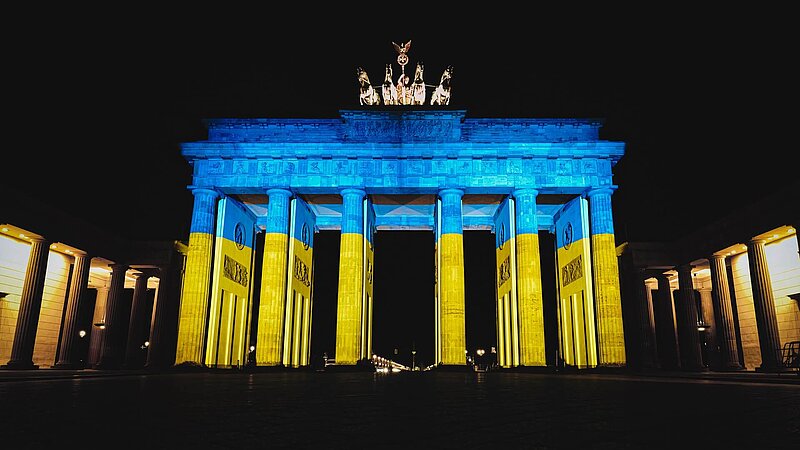
On 24 February, Russia invaded Ukraine. We talked to the Centre for International Security Director about what the conflict means for the West, the possibility of a nuclear escalation, and possible reactions from NATO member states to the conflict.
1. What does invasion mean for Europe/NATO?
Large-scale war in Europe has long been considered unthinkable, a thing of the past. Europe has not seen such a large-scale war since 1945. The brazen invasion of a sovereign country in Europe has shattered this, perhaps in hindsight, naïve belief. This might be the most defining moment in international security since 9/11 or even since the end of the Cold War.
Europe and NATO must come to grips with a new security situation. War is back. Immediate challenges include maintaining western unity, mass-migration from Ukraine, spiralling energy prices and fears of Russian reactions to harsh sanctions. More is coming: a new land border with Russia if Putin decides to occupy the entire country, fears of Europe’s eastern members to be next on Putin’s agenda and a hard look at previous European foreign and security policies. In Germany for example the idea of ‘Wandel durch Handel’ (change through trade), long a defining feature of German foreign policy vis-à-vis Russia, appears to have failed.
2. How realistic and dangerous is the possible escalation of a nuclear threat?
It is unlikely that nuclear weapons will be used during the course of the unfolding situation in Ukraine. Nor is there any direct indication that Russia plans to use nuclear weapons against Ukraine. However, there is a nuclear aspect to the conflict. On Thursday morning, Putin issued a thinly veiled threat to use nuclear weapons against anyone trying to intervene in the conflict. A nuclear readiness drill also took place last week. While this might be dismissed as bluster, it is important to realise that there are both inadvertent and advertent escalation pathways that could lead to nuclear use.
Misperceptions can occur, especially during crises. NATO vessels or planes might inadvertently be targeted in the crossfire. A Turkish civilian vessel appears to have been hit by a stray bomb yesterday. Any entanglement of NATO forces with the potential to trigger Article 5 will raise the stakes significantly. Some analysts are also concerned that Russia’s nuclear strategy includes the so-called ‘escalate-to-de-escalate’ doctrine to use a nuclear weapon demonstratively to force the end of a conflict. While there is no indication that Putin could consider nuclear weapons in the unfolding conflict, there is the question what he will do if the Russian military operations cannot achieve a quick victory.
3. What options does NATO have? How can they react?
Ukraine is not a member of NATO, which means that this is not an attack on all and NATO member states have already ruled out any military intervention. However, NATO member states are affected by this crisis. The alliance’s eastern members who border Ukraine have invoked Article 4 triggering NATO consultations. There will also be a virtual NATO summit on Friday, which includes the non-member states Sweden and Finland.
While NATO will do its utmost not to be drawn into the unfolding situation in Ukraine, NATO’s Enhanced Forward Presence battlegroups (created after Russia’s annexation of Crimea in 2014) located on NATO’s eastern flanks are already receiving military reinforcements. One option for NATO could be to activate its Very High Readiness Joint Task Force (VJTF). This might be decided upon today but Russia could see this an escalatory step. Time will tell.
The Hertie School is not responsible for any content linked or referred to from these pages. Views expressed by the author/interviewee may not necessarily reflect the views and values of the Hertie School.
About our expert
-
Marina Henke, Professor of International Relations | Director, Centre for International Security
